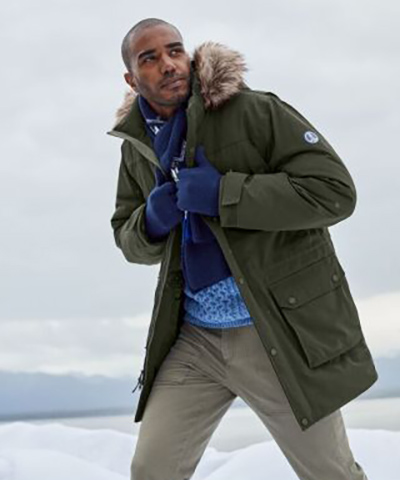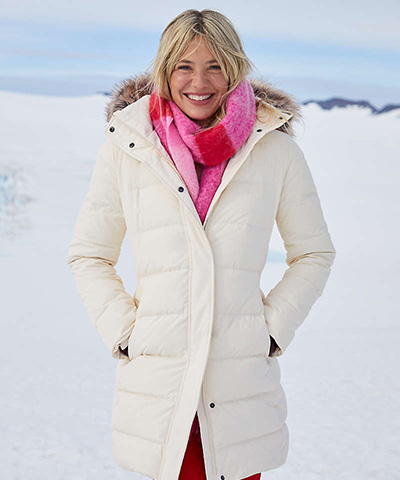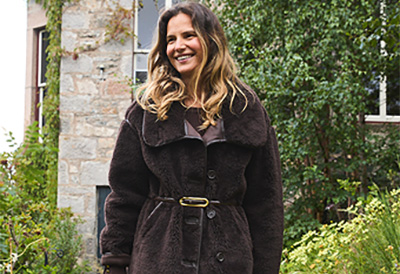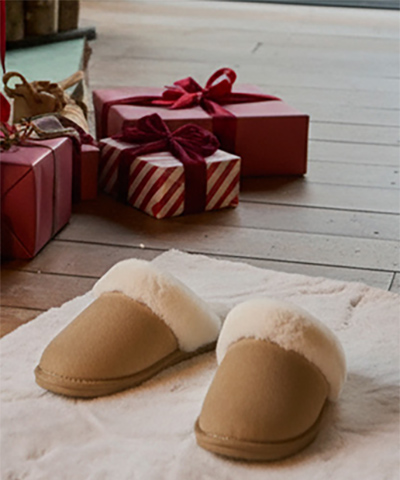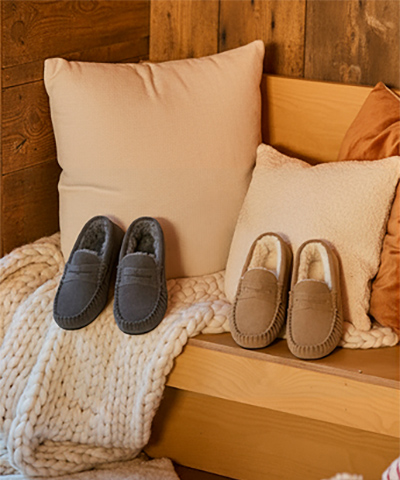
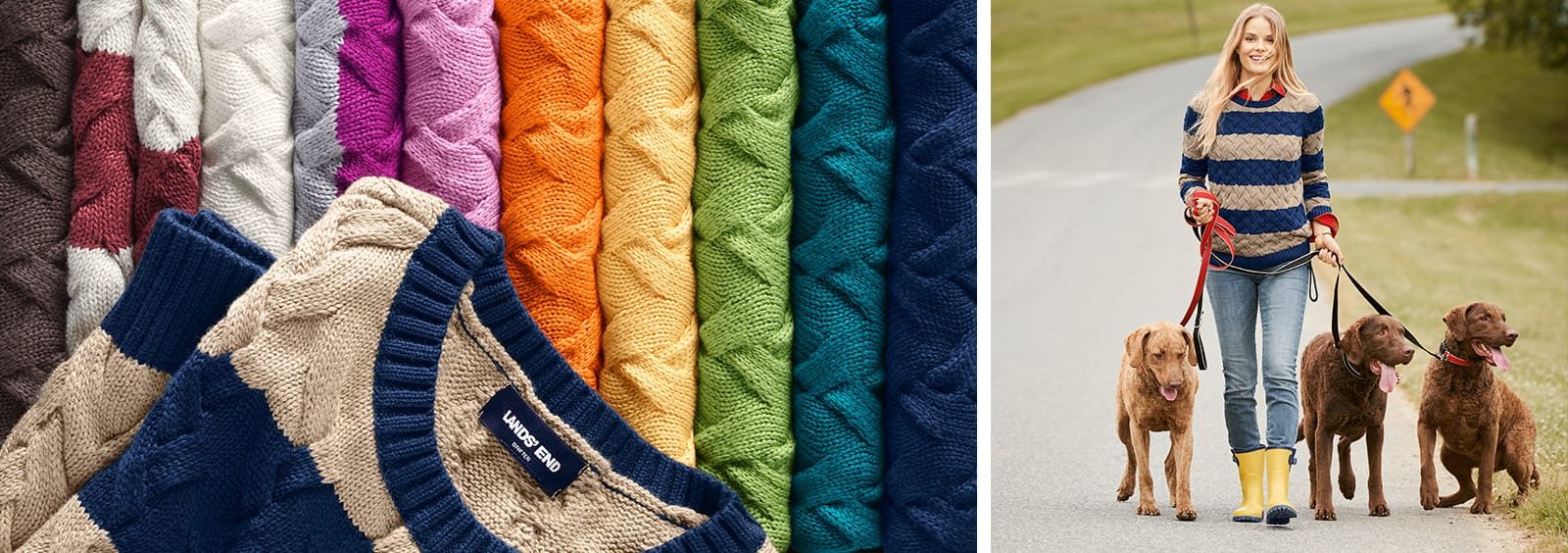
Everything you need to know about cotton sweaters
When the word "sweater" (or for our friends across the pond, "jumper") is spoken, a piece of clothing woven from cotton isn't always the first thing that comes to mind. In the public's imagination, wool is most readily identified with the sweater category.
However, there is good reason for that notion to change. From cotton cardigans to cotton cable sweaters, lightweight cotton sweaters to warm cotton sweaters, a men's or women's cotton sweater can provide warmth 12 months a year while remaining easier to wash and care for.
We know that you may have some questions, which is why we've decided to outline everything you need to know about cotton sweaters below.
Are cotton sweaters warm?
If you assume that all cotton sweaters are light, you'd be mistaken. Just as there are lighter and heavier wool sweaters, there are also cotton sweaters that have been designed for wear during the colder months. To consider how much warmth a cotton sweater will provide, first consider its weight. Is it a lightweight cotton sweater, or a cotton sweater with a heavier weight? Next, examine its texture. A cotton sweater that has a finer finish is going to trap less warmth, while a cotton sweater with a raised texture, like a brushed or combed sweater, will retain more warmth.
Are cotton sweaters good for fall weather?
The cotton sweaters that are best suited for fall weather will be in the heavier, warmer range of cotton sweaters. Aside from looking for warm cotton sweaters with a heavier weight and a more pronounced texture, you may also want to look to those cotton sweaters that are available in styles or patterns more associated with fall, such as a cotton cardigan or a cotton cable sweater.
Can you hang cotton sweaters?
No, you should fold rather than hang your cotton sweaters. Over an extended period of time, a sweater that has been placed on a hanger will eventually have its shoulders stretched out from the hanger and lose some of its shape. The misshaping may not been as dramatic as what would occur with a wool sweater, but hanging is still not the ideal way to store a cotton sweater. But if you must hang a cotton sweater, try selecting a hanger that is made of wood or plastic and has a rounded quality to its shoulder line, rather than settling on a straight wire hanger.
Can you iron cotton sweaters?
Cotton sweaters can be ironed, but you don't want to iron them in the same manner you would a cotton shirt or a pair of cotton pants. The danger is that the heat applied by an iron may cause the cotton knit to appear "shiny" once it has been ironed. To avoid this outcome, place a damp towel between the iron and the cotton sweater being ironed. Simply iron above the towel, using it as a protective barrier between iron and garment.
Will my cotton sweater shrink?
Yes, it's possible that your cotton sweater may shrink. Most cotton garments will shrink slightly after the first wash, and will shrink to a greater degree if they are dried using a dryer afterward. To avoid the possibility of shrinkage, always wash your cotton sweaters on the coldest setting, and then air-dry them rather than placing them in a machine dryer. To effectively air-dry a cotton sweater, spread a bath towel on your floor and lay your cotton sweater flat on top, and then rotate the sweater once the side facing upwards has dried. It may take up to 24 hours for your cotton sweater to fully dry, but it's a better outcome than winding up with a too-small garment.
What size should I order? Do I need to size up?
It's difficult to prescribe a certain sweater size without knowing in advance your own measurements and the make of the cotton sweater, but it is helpful to know how you plan to care for the cotton sweater. If you will hand-wash the cotton sweater, it will make more sense for you to order true-to-size. If you plan to machine-wash the sweater, which may cause some shrinkage, you might feel more comfortable ordering a sweater one size up.
How do you reshape cotton sweaters?
The act of reshaping a cotton sweater is something that might sound tricky on paper, but it's quite easy in practice—so long as you remember to follow a few simple rules. The entire point of the reshaping process is to ensure that a cotton sweater returns to its original shape after it has been washed. To ensure that it will, first take some basic measurements, such as the length of each sleeve and the length of the hem, before washing by hand or machine. After the sweater has been washed, lay it flat against a towel, in such a way that it matches the measurements you had taken previously.
How do you store cotton sweaters?
The best way to store a cotton sweater is to fold it neatly, with the arms tucked inside and folded once lengthwise. Once the sweater has been folded, store in on a flat surface like a shelf. It's all right to stack one cotton sweater atop of another, but try not to stack too many sweaters into too small a space, as cramming may create hard-to-get-out wrinkles.
Can you wear cotton sweaters year round?
Despite what you might think, cotton sweaters are more than just a seasonal item. There's a great deal of difference between a lightweight cotton sweater and a women's winter sweater. What ultimately decides whether a cotton sweater can be worn year-round are its weight and its weave.







